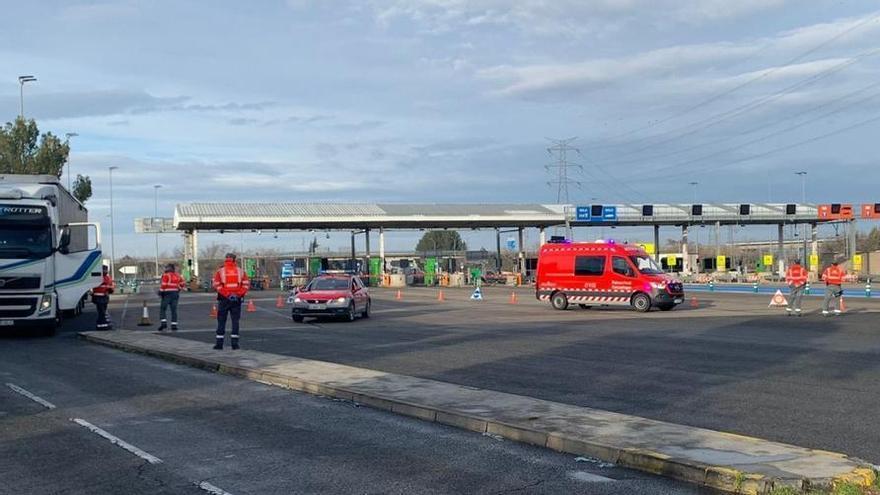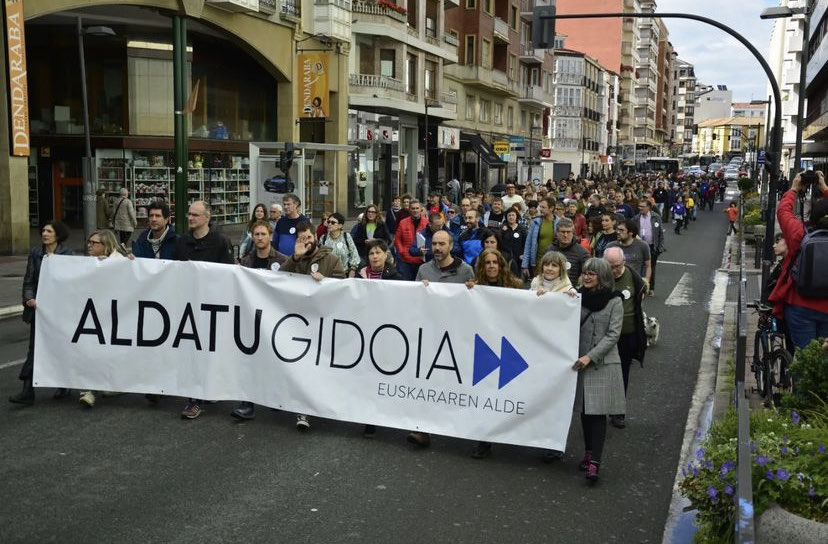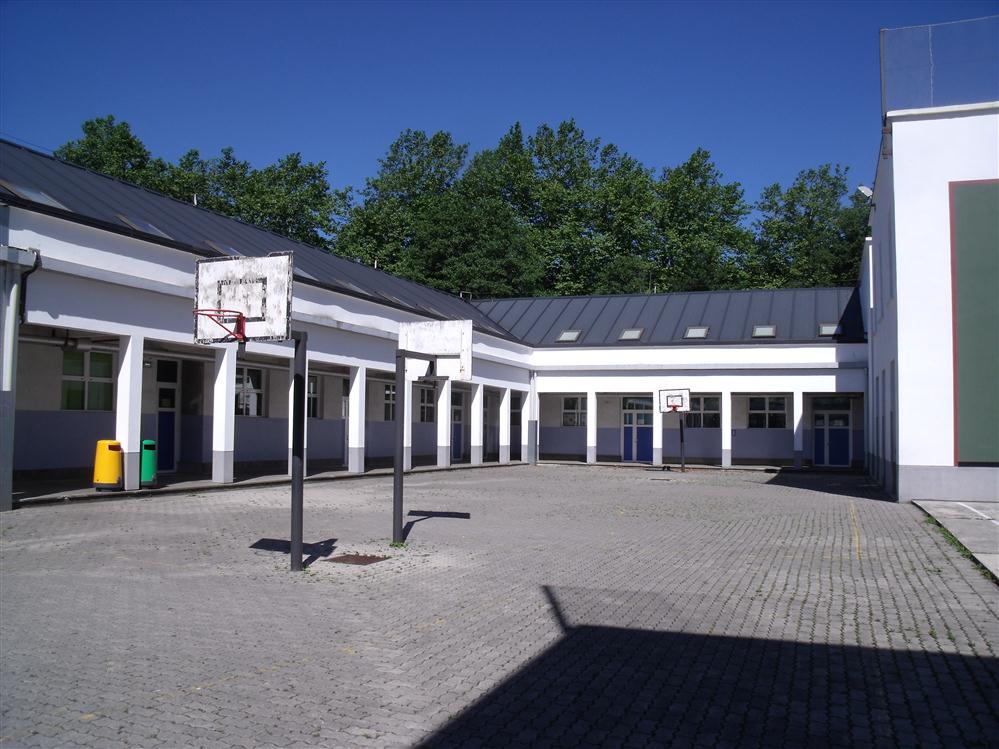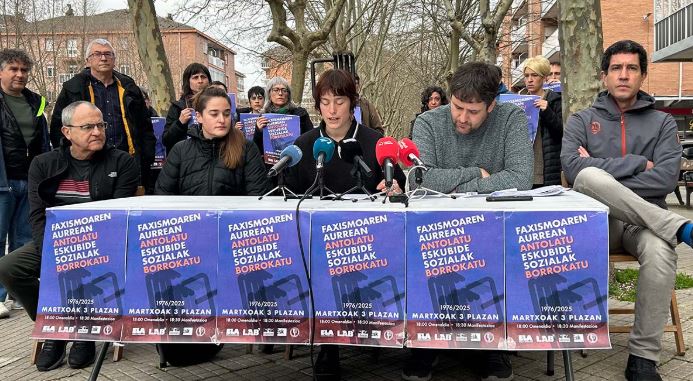Shattered by the sun and the wind
- In 1998, the first wind farm in the Spanish State in the Mountains of Forgiveness was installed in Navarre, located in the southwestern part of Pamplona. The first renewable energy bubble would rise until it broke out. Although in geometry it is not possible, the bubble is structured around rigid and contradictory tips: the energy needed for the future, the reduction of natural spaces and the negocio.Son witness to this dozens of projects being presented in Navarra.
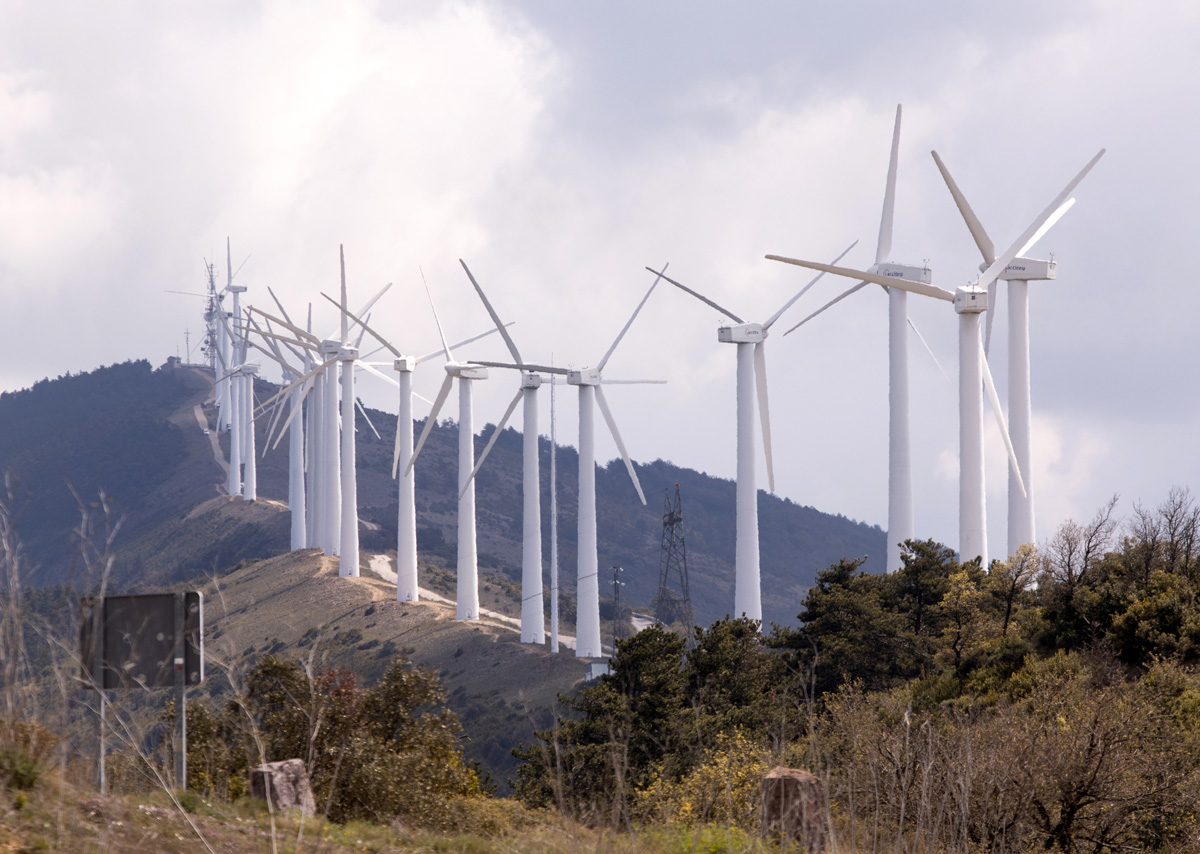
I leave Pamplona, I take the Highway of the Camino and I am crossing Forgiveness on a sunny day. The radio says that 90 years ago the republic was proclaimed in Eibar. Faced with the obsolete and imposed monarchy, the republic, the political regime created to protect the rights of citizens. I have come to the touch of the melodies of the hymn of Irrigation, in the south of Forgiveness, in the village of Adios, waiting with a wonderful parsimono. I find myself in the dream of many citizens of these dark times of COVID-19.
On the right of the left is a landscape in which the hives and garis dress in yellow and green at this time. The energy company Solaria wants to build on these beautiful plots a photovoltaic polygon of 300 hectares, that is, about 600 football fields north of the town, full of solar panels. In other words, 40 per cent of the total land of the village and 95 per cent of the cultivable plaques. This company has announced that on 7 May it will place in Trillo (Guadalajara, Spain) the first stone of the largest photovoltaic park in Europe. Without a doubt, this supposed republic of rights would have a job defending its inhabitants and their natural spaces.
At the moment there are 62 wind and photovoltaic projects being processed in the Government of Navarra, 13 of them in the allegation phase. 35 are wind and 27 photovoltaic. There are currently 49 photovoltaic parks in the territory, of which 30 in the Ribera, most of them built between 2005 and 2010. The race is not new, so for almost two decades they have been trying to turn the “solar gardens” of that time into latifundia. As for the amount of energy, they all have a power of 142 megawatts (MW), and by 2030 the energy plan of the Government of Navarra provides for 1,439 MW, that is, ten times the current solar polygons. Wind Navarra, Ríos Renobables, EDPR, Solaria, Gesnamur, Ehnol Group, Syder and Solarig and ATI Peralta are some of the companies behind these projects.
Among the photovoltaic projects, the most important is that of southern Forgiveness. Solaria wants to build the 50 MW Serena Solar polygons 1, 2, 3, 4, 5 and 6 each. Adios, Muruzabal and Uterga would be the most affected, occupying an area of 550 hectares. It would actually be 4.95 MW of power, because if we spend more than 50, the projects must be processed in Madrid and then the process is complicated and complicated. That is why many parks are installed below this number, but many of them form a single park.


The Galar, Cizur and Beriáin Cends also provide for four large polygons of 400 MW of total power. Fontellas, Corella, Tudela, Cortes, Cascante, Hiriberri, Arguedas, Aibar, Mendigorría and Peralta are other affected municipalities.
I spoke with Gorka Ederra, member of Erreniega Salba Dezagun 4.0, next to the main source of Goodbye. They are making videos, songs, conferences, meetings with political parties... “We will do our best to defend the nature of the people, because it is clear to us that if you move forward with this you will drastically change Adios.” Going north of the town, he taught me above the hill the details of the project: “I came with a friend of the town and here I almost cried to him representing the thousands of solar plates that you can put down there.”
What about rooftops?
If the demons go on the roof, why not the solar panels? There are many factors that influence the momentum of these polygons, especially those related to the energy transition and the consequent public-private blow. And the technological facilities are also there, because today it is much cheaper to build a polygon of these characteristics than it was ten years ago, especially in the photovoltaic field. It is therefore clear that this area is going to be very open, and if it is done with little control, it is easy to predict the reduction that is coming.
One of the main questions would now be: Why don't solar panels be built in already urbanized spaces, rooftops, industrial sites, etc. ? To do this, on the one hand, the change of the energy model should be encouraged, moving from a current centralised energy model to a decentralised one. That is, from the current high-voltage model to a low-voltage model, among other things, to considerably reduce the energy loss in electric transport and protect natural spaces. It should not be forgotten that, in addition to the construction of windmills and solar panels, the construction of large slopes in the mountains and the construction of giant high-voltage lines for the transport of electricity generated in the parks to the substations are essential.

The problem is not just Navarre, it is a global phenomenon. According to the study carried out by the Spanish State Sustainability Observatory, the “solar park” of 17,603 hectares of state roofs, consisting of thousands of small installations, would cover the need for 7.5 million people of electricity, that is, one sixth of the population. Legislation is important in this drive, but also contradictions. Last January the Subai Erakuntza Foundation published an interesting publication on the new explosion of renewable energies in Navarre, in which many of the data we are discussing are detailed.
In Navarre, the Foral Law on Climate Change and Energy Transition will be adopted soon and Article 26 provides for the establishment of solar panels in roofs and urban centers. The Navarra Energy Plan 2030 covers soils of high agricultural value, preventing the installation of wind farms in them, while the aforementioned Transitional Law overrides these inconveniences, for example, with the second derogatory provision. The authorities of the Ministry of the Environment express their support for the protection of rural areas, but a very different environment is being promoted from that of Industrial Development. Both depend on Geroa Bai. For example, in the opinion article drafted by former advisor Manu Ayerdi in January of this year, it was considered essential that in this promotion of renewable energies some natural damage should be assumed. What is a “natural harm” to those who associate APR with progress?
Navarre exports electricity There
is no doubt that in future fossil energies should disappear and be replaced by renewable energies. The question is how and for what. According to the 2019 Navarra Energy Balance, 21% of the energy consumed in the country is of electric origin, the rest is of fossil origin, especially oil, gas and coal. And the sectors that consume the most are transport and industry, far behind – see the report table – consumption of households and businesses, agriculture, administration and public services.
So much more electricity from renewables is needed for the future, but as Subai Fundazioa says in her publication, the biggest problem now is how to reduce that other 80 percent fossil. The industrial and economic processes of our society have been built on fossil fuel and are not yet ready to talk about electricity. It is significant and paradoxical, but Navarra exported 30% of the electricity generated in 2019. And not only in Navarre, but also in the Spanish State more electricity is produced than can be consumed: In 2019 it had a production capacity of 110,000 MW and the highest demand in recent years, 2007, was 45,450 MW, and since then there has never been so much demand.
The attack of the new
giants was lifted in the 1990s by 50 meters of windmills in the Sierra del Cil. Currently, in the polygon of La Senda, the towers they intend to build in the lands of Azuelo, Aguilar de Codés, Aras and Viana are four times larger. According to Nabramind, the highest in the world have been: Tower 200 meters and rotor 160 meters in diameter, with which the height of the windmill would reach 280 meters.
Siemens Gamesa wants to install the maximum power wind mill of a terrestrial wind tower in the world, on the mountainous line of Alaiz, with a power of 5.8 MW, and its rotor can reach 170 meters in diameter. It's also not easy to imagine, and if today's fins kill hundreds of birds every year, you know what wrecks the new giants can bring with size claws.
The number of wind turbines envisaged is not entirely clear, but 28 projects are currently being reported on the website of the Government of Navarra, ten of which are in the phase of allegations. Currently there are 53 polygons, most of them built between 1998 and 2006. The wind turbines at that time were 1 MW of force and parks were built from 30 to 50 wind turbines. Between 2006 and 2020 some twelve parks have been built, each windmill has a force greater than 3 MW and many fewer towers are installed in each park, between 6 and 30, which is much larger, as we have already mentioned in the previous paragraph. According to the Subai Foundation, wind farms up to now have a power of 1,279 MW and would like to reach 1,332 MW with the set of news items to be produced: “It is therefore noted,” they say in the above-mentioned report, that the plans submitted in one year would comply with the plans made for 2030, that is, the doubling of the wind power.”

Many of these projects are intended to be built in areas already full of wind farms, particularly in the centre of Navarre and in the Ribera. In addition, there is a significant and dangerous innovation: the parks have so far been built south of Pamplona and the door is opened to the construction of the north of Pamplona, so far discarded by its negative impact.
The construction of Sacyr in the north of the Comarca of Pamplona is one of the largest polygons and the most affected areas would be Odieta, Txulapain, Ezcabarte, Olaibar, Anue, Steribar, Egüés Valley, Lizoain and Valle de Erro. Five parks have been presented, but they are actually two, with a total of 56 wind turbines and their energy would be transferred to the electrical centers of Orkoien and Cordovilla through several high-voltage lines. Green Capital Power has two other projects, one in the south of Urbasa, in the valleys of Tierra Estella and another in Etxauri. At the same time, Nordex Acciona has another smaller project in Bortziriak, Lesaka.
The Ministry of the Environment of the Government of Navarra has already presented the first environmental report for the five parks of the County of Pamplona, in which the company is warned of the numerous damage that the project can cause (birds, landscape, trees, strong slopes, near the towns...). The main conclusion is that: “On the basis of the above, it is therefore noted that the impacts of wind farms and their evacuation infrastructures can be significant and, consequently, significantly question the environmental viability of the projects provided.”
In order to cope
with these New Winds Projects, last year the Haize Berriak Association was created, with the objective of bringing together the groups formed in the surroundings of the Comarca of Pamplona and protecting its valleys and villages from the polygons. In short, they propose new models before old and giant models that threaten them. Mobilizations have already been carried out in the villages and before the institutions of the Foral Government, and along with many other Navarros groups and parties are asking the Government of Navarra for a moratorium on projects.
If I landed at Goodbye to the heat of the sun, I've come to the appointment with Haize Berri's peers, with a astonishment about the bicycle. I met at the Civic Center of Arre with Carmen (Txulapain), Cruz (Antzibar), Fermín (Steribar) and Manu (Ezcabarte). “The projects have come to us with a lot of darkness,” says Fermín. In February 2020, drip information began to be received. And Carmen reaffirms the idea: “They have not been clear, they have told us ‘it is here’, but without saying much, that is, I do not say a lie, but neither does the truth.” They are small towns, some of the dozens of inhabitants, “that’s why we started to come together to make strength,” says Fermin. For example, promoted by Olaibar Bizirik, on March 28, 50% of the population participated, opposing 90% of the projects. Since 9 May, nine hiking has also been organised for five weekends.
The first environmental report of the Forum Government ' s Environment Department is also addressed: “The truth,” says Cruces, “seemed demanding and I was surprised.” “Yes, but what is our fear – Manu adds – that this report should lift the hare to companies, that is, what and where they should improve in order to overcome the environmental disadvantages imposed.” Carmen is a lawyer and cites some of the strengths of the legislation: “In all current legislation we can find a common component, which must be left to future generations as best as possible, that is constantly taught in all areas of education. For what way to leave future generations the best possible situation.” In short, Cruces concludes, “this struggle has two fronts: one facing these projects and another generating alternatives, and that is why we ask for time, moratorium, in order to reflect and debate with the tranquility that the theme demands in society”.

Gold companies dancing Each
has its role in this film and business commercials appear on the front line. The plots of wind farms are communal in most cases or municipal property, but in the photovoltaic polygons many plots are private. What is happening in Goodbye can serve to represent the situation of many other peoples.
It is the summer of 2020, the representative of Solaria is explaining the project to the citizens gathered by the city hall in the assembly. It says that it still has no concrete project, but in case it has brought contracts in the suitcase ready to start the rental of land. Of the 300 hectares it wants, 200 are related to the lands owned by the prestigious and gigantic company Valle de Odieta. Another 100 hectares are distributed among 17 inhabitants, some want, some do not, the village is divided. Goodbye has 152 inhabitants. Solaria brings gold on the table: It offers EUR 1,200 per hectare, there are no crops that contribute this crop. And also, sports, covered pediment, care center for the elderly, jobs, bar... “This is wealth for the people. It’s a huge opportunity, and if you don’t want to go to Uterga and Muruzábal and you will be left with nothing.”
The municipal government also sees it clear, the city hall is going to have more money and the ability to do more things. The municipal authorities and the representative of the multinational come together. But the counterparts are also firmly in the arguments and in the intentions: “No, we do not need all of them, they will break the current character of the people, the possibility of cultivating and caring for the soil will be lost. Nature, landscape, tranquillity, agriculture, Camino de Santiago... Those are our highest values and values, for those other services we have Pamplona or Puente la Reina, a few kilometers away.” The ones from Solaria to the great ordago: “Influence in Pasaia? That’s a matter of taste, with the brilliance of the solar panels, the parks are very nice.”
Outside the locality, the company will remain committed in the coming days and weeks. This time it is the turn of a senior position. One of the citizens who stood in the opposition calls him over the phone and informs him that he wants to be with him. They are quoted in Pamplona and given him a prausta: “Do you want to work with us?” Not the citizen, who could not morally. And Solaria's authority insists: “I do not understand you, in the Government of Navarra I have all kinds of facilities, also in the mayor’s office, can we not reach an agreement with you?”
There are two important keys to the energy transition to be made, one on how to replace fossil energy and the other on the necessary reduction in energy consumption and, therefore, the change in the socio-economic model. The biggest problem is that, at a time when private sectors have so much influence on governments and society, energy is being done a lot in the generation and especially in the traditional way, but almost nothing in the reduction of energy consumption. The word deceleration is still cursed. And when you look at the scrolls of Solaria, you think that in order for the energy transition to succeed, it's not just the energy that needs to be renewed.



Source: Energy Balance of Navarra 2019. Government of Navarra / Meter: Equivalent in tonnes of oil
In 2021 we began to hear the first echoes of the Guggenheim Urdaibai project. The then General Manager Unai Rementeria told us that it would be done yes or yes. To reinforce his claims, he left 40 million euros “shielded” by the time the museums were built. There it is!... [+]














